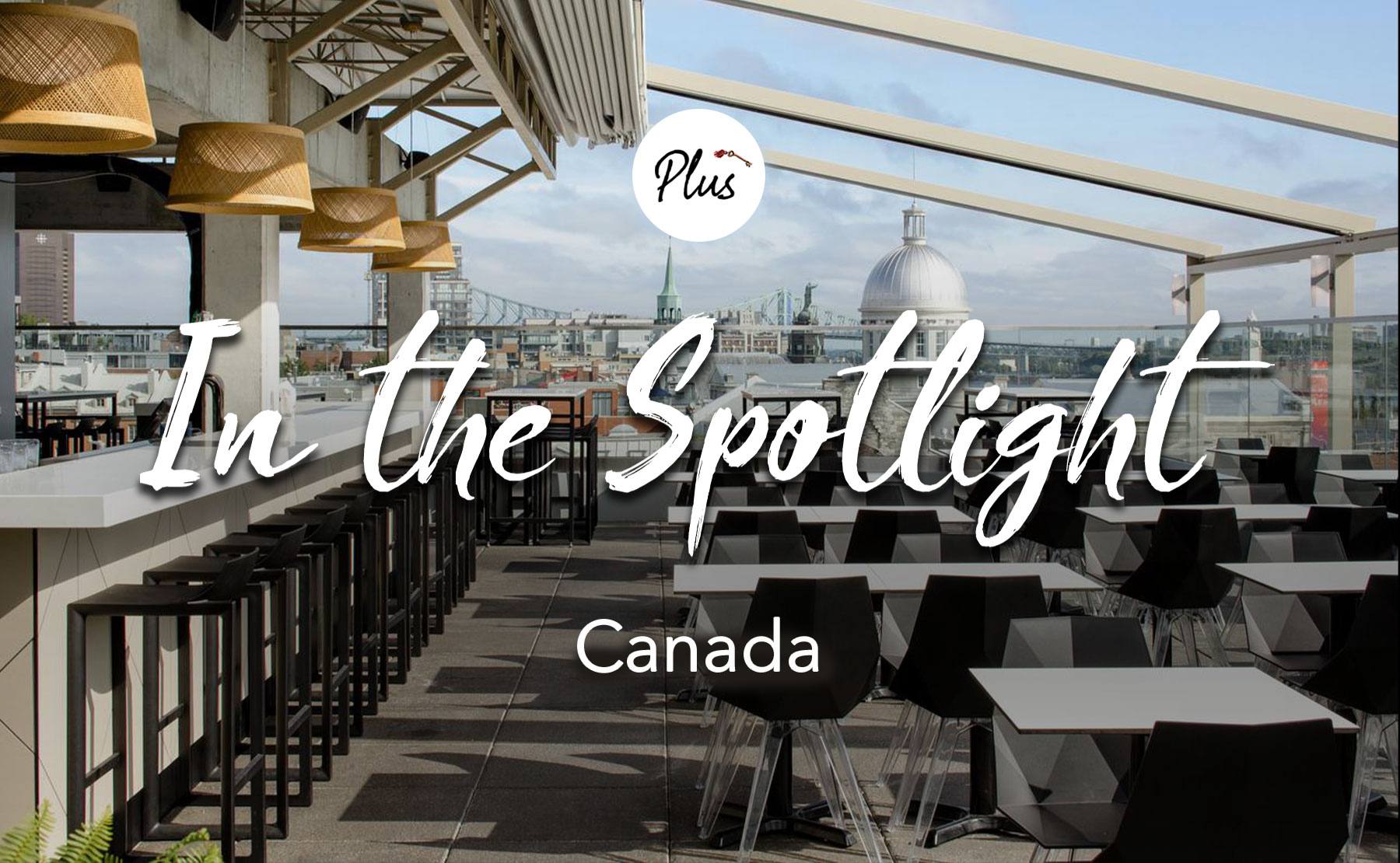
Click on each hotel to see all of the privileges they offer. Click here to learn more about Tablet Plus.
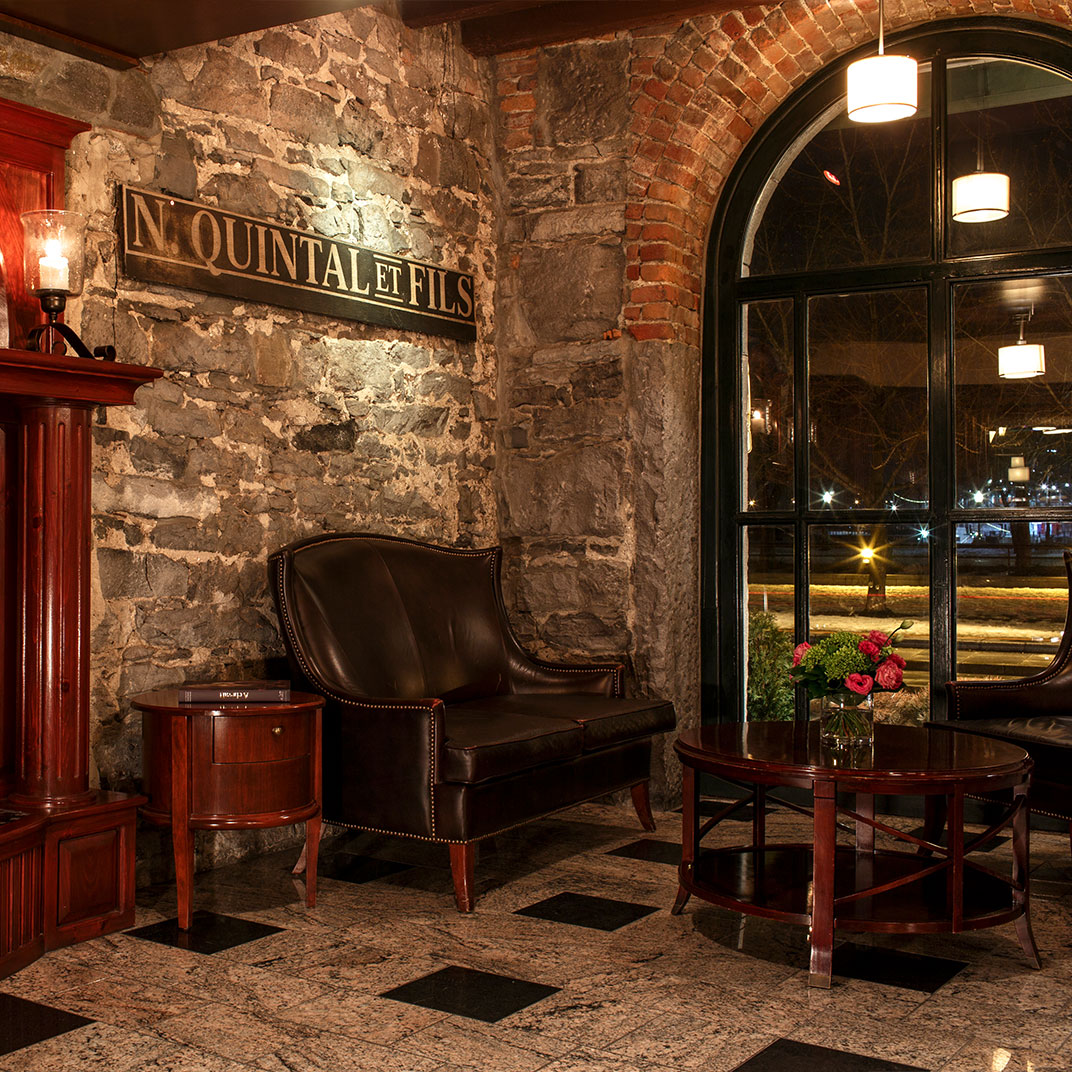
Auberge du Vieux Port
Montreal, Canada
Old Montréal is like a city within a city, a slice of Old Europe right in the middle of a major North American city, where one can still hear the hooves of horses, drawing carriages along the meandering cobbled streets. And the Auberge du Vieux-Port is a bit of a trip through time as well—though nominally a boutique, and younger than it looks, the hotel is chock full of historical detail, with rustic touches like timbered ceilings and pine floors and 1882-vintage stone and brick walls.
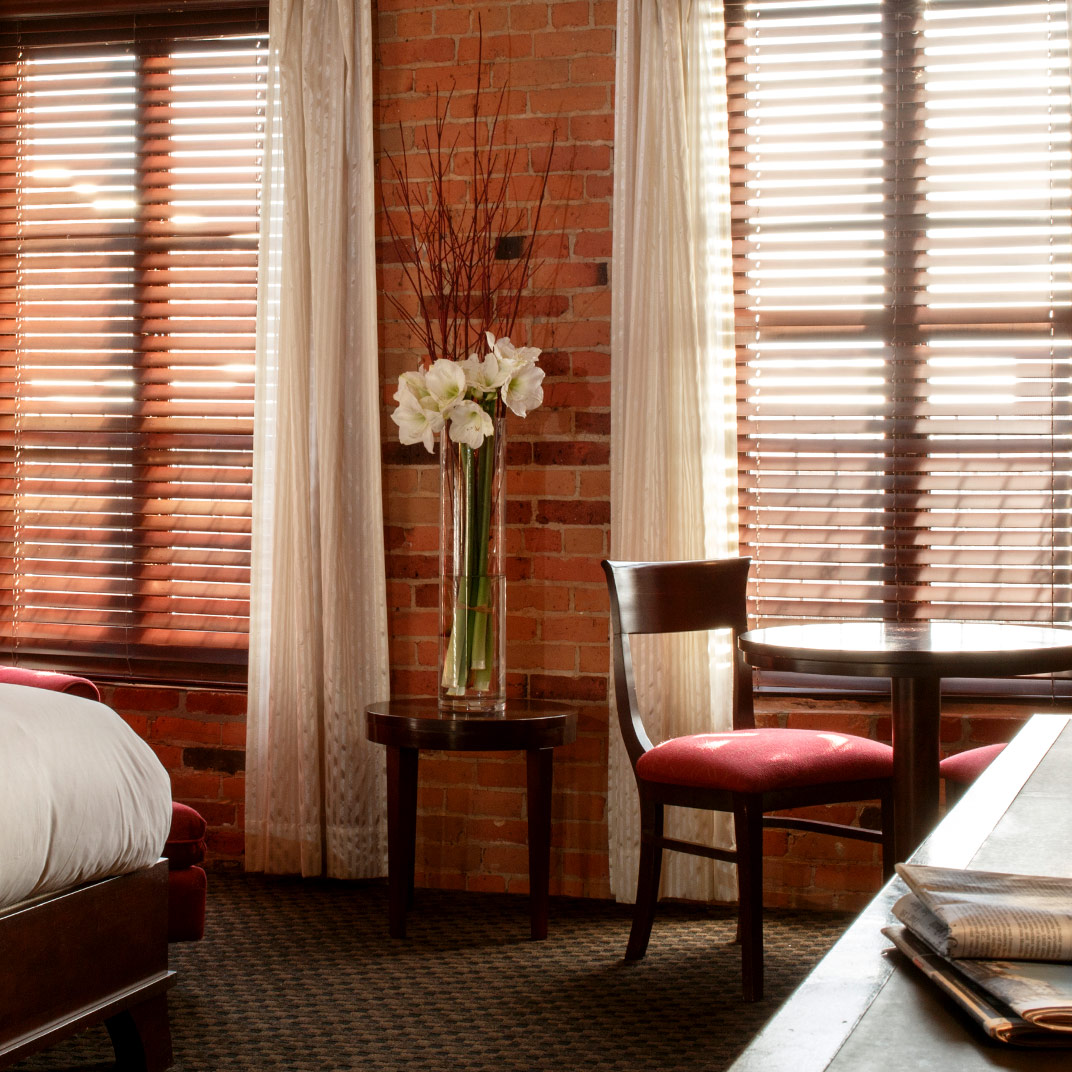
Hotel Nelligan
Montreal, Canada
The Hotel Nelligan is named for Émile Nelligan, one of Quebec’s most celebrated poets, and his face and quotations adorn the interiors of the hotel. It’s a detail that stops well short of outright gimmickry, but it contributes to the sense of history that is thick in the halls of this 1850 building.
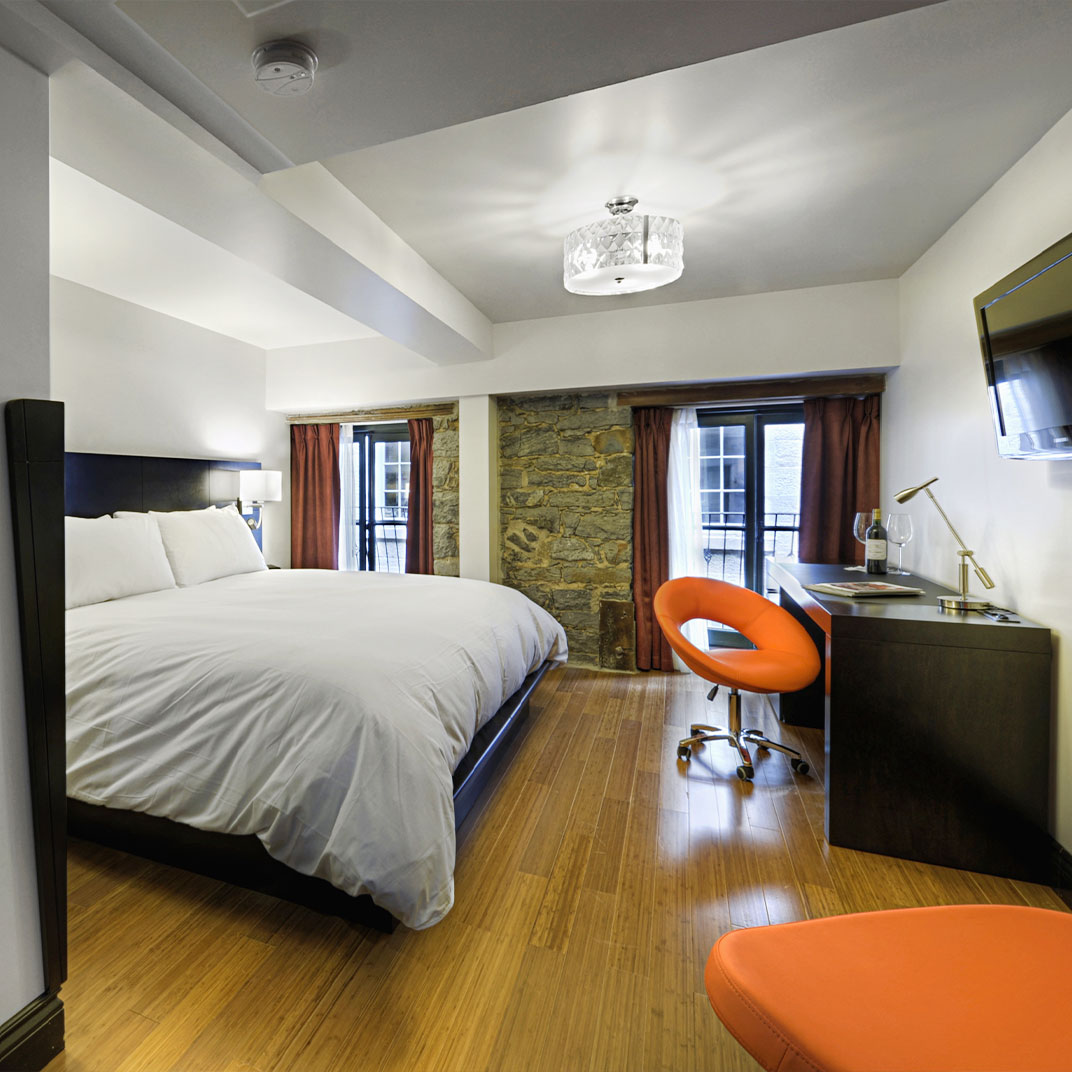
Le Petit Hotel
Montreal, Canada
Although Le Petit Hôtel may be petit in size, it’s grand in luxury, in a style that evokes a lost bohemia of nineteenth-century Europe. The Antonopoulos Group have made a habit out of carving modern boutique hotels out of Vieux Montréal’s historic buildings, most notably the Nelligan and the Auberge du Vieux Port. And with Le Petit Hôtel, located in the center of the historic district, you’ll feel like a Montreal local, surrounded by hidden clubs, bars, shops and galleries.
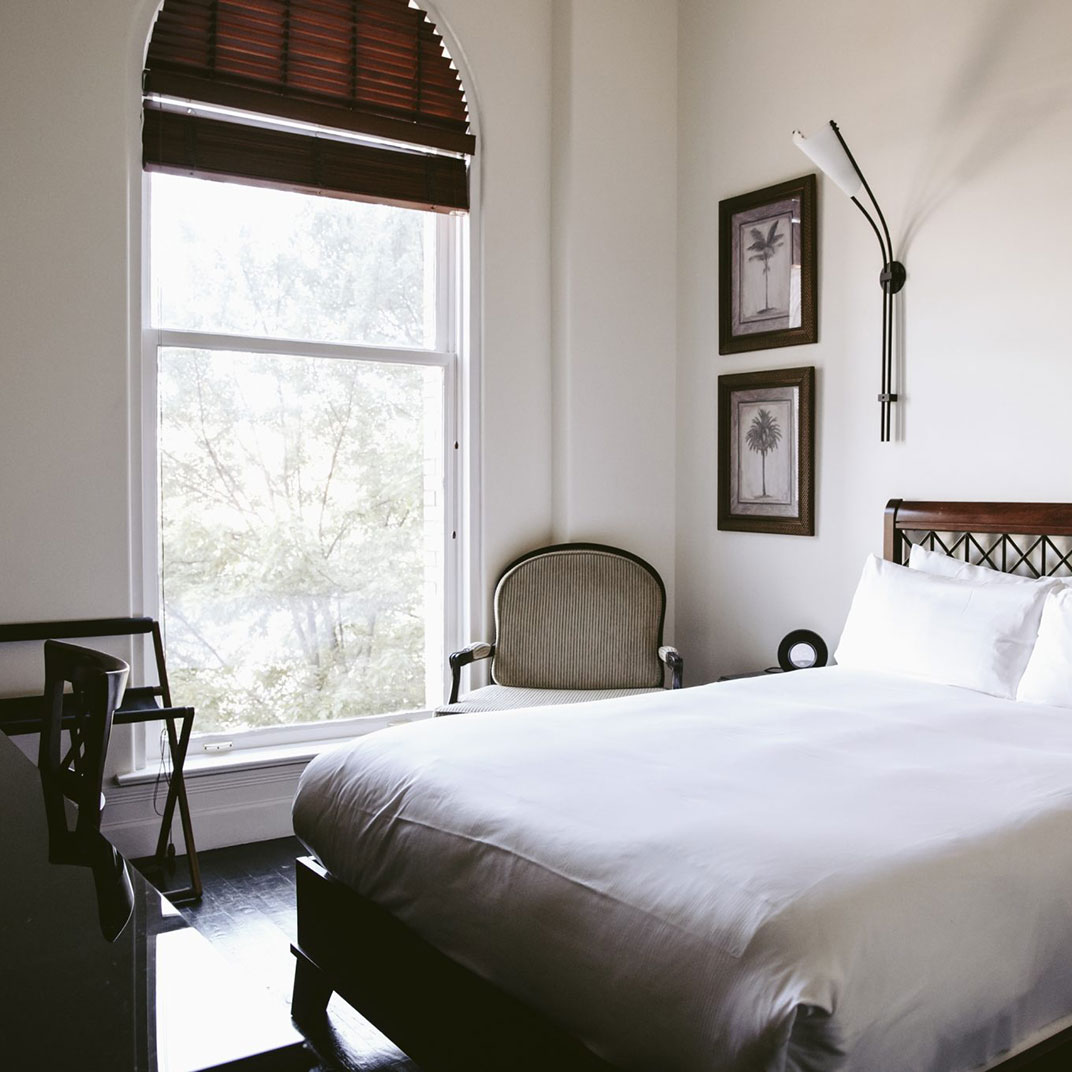
Le Place d’Armes Hotel & Suites
Montreal, Canada
Hotel Place d’Armes is a new addition to the historic district of Old Montréal, a modern boutique hotel within the renovated nineteenth-century Great Scottish Life Insurance building, and an ideal vantage point from which to witness the resurgence of this once-neglected neighborhood.
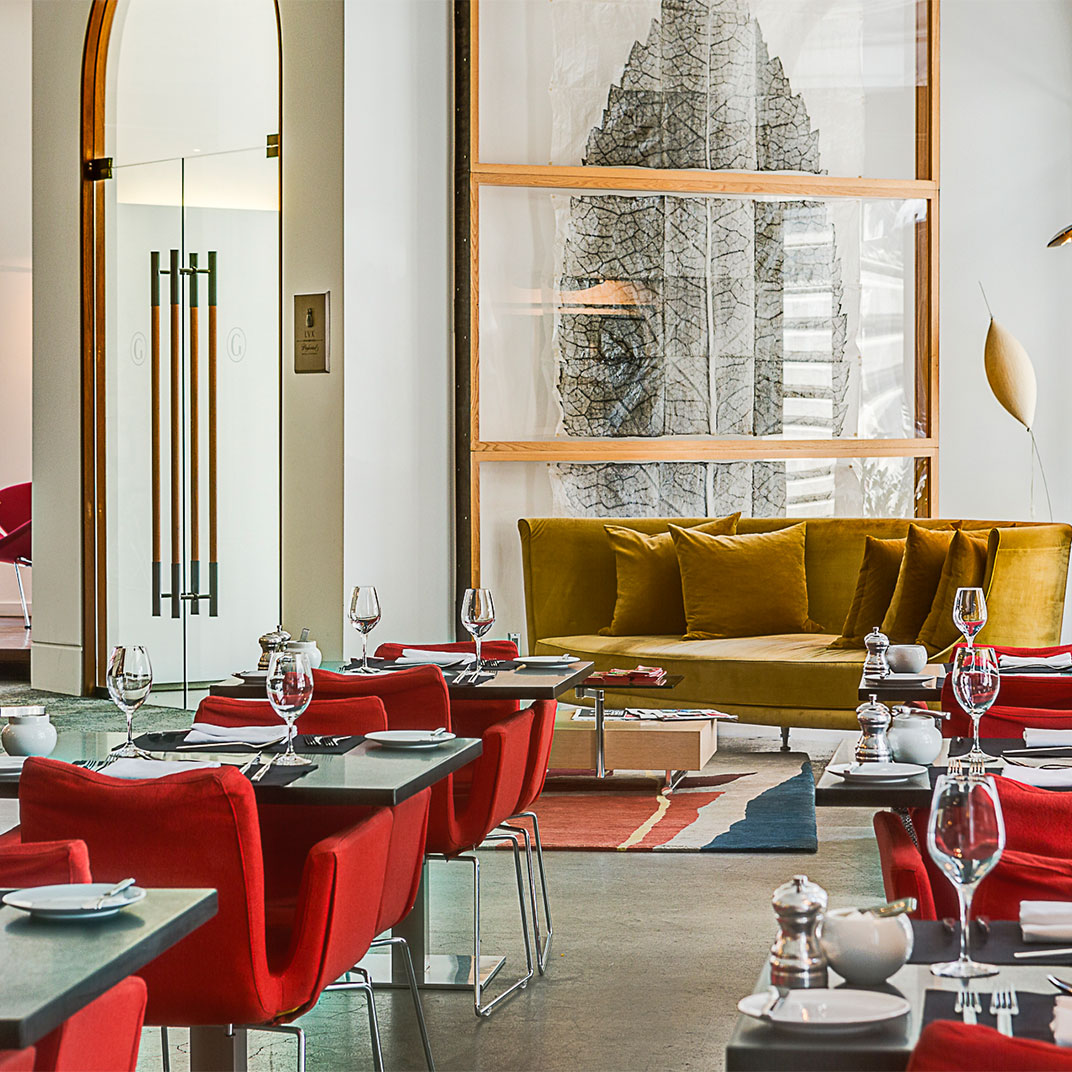
Hotel Gault
Montreal, Canada
In the historic quarter of Vieux Montréal, behind the 18th-century stone facade of a former carpet factory, you’ll find one of the most modern hotels in North America. Hotel Gault has no time for the French country style of many of its neighbors—the look here is industrial contemporary, with open-plan loft-style rooms, floors of polished concrete, and 1950s Eames chairs that look as futuristic today as they did when they first came off the drafting table.
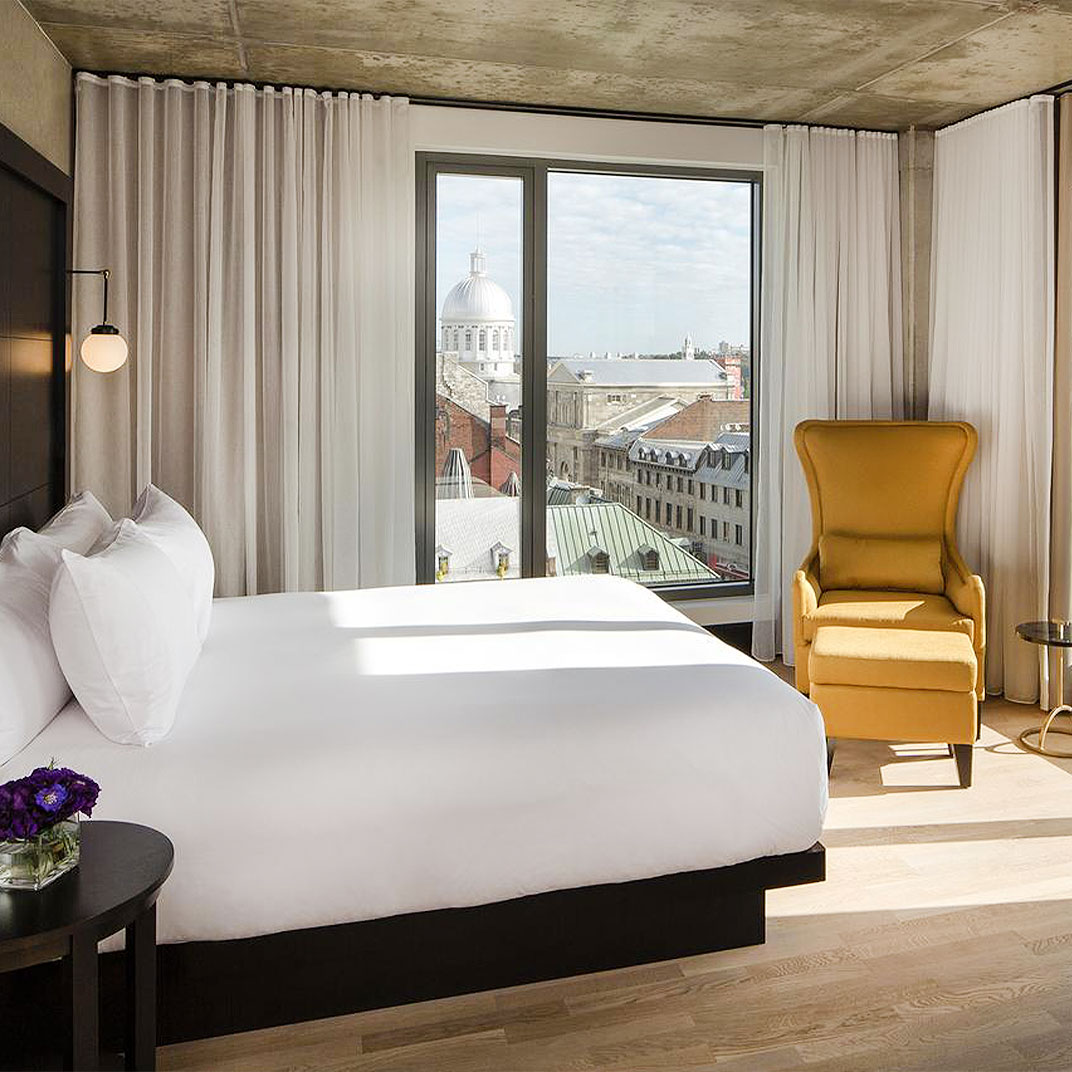
Hôtel William Gray
Montreal, Canada
There’s no place in North America with more historic character than Old Montreal — which means that a design hotel like the William Gray, made from a pair of 18th-century heritage buildings and a contemporary addition, gets maximum impact from its stylistic contrast. Once you’re inside the modern section, with its soaring glass atrium, it’s clear that you’re in for a 21st-century luxury-boutique experience.
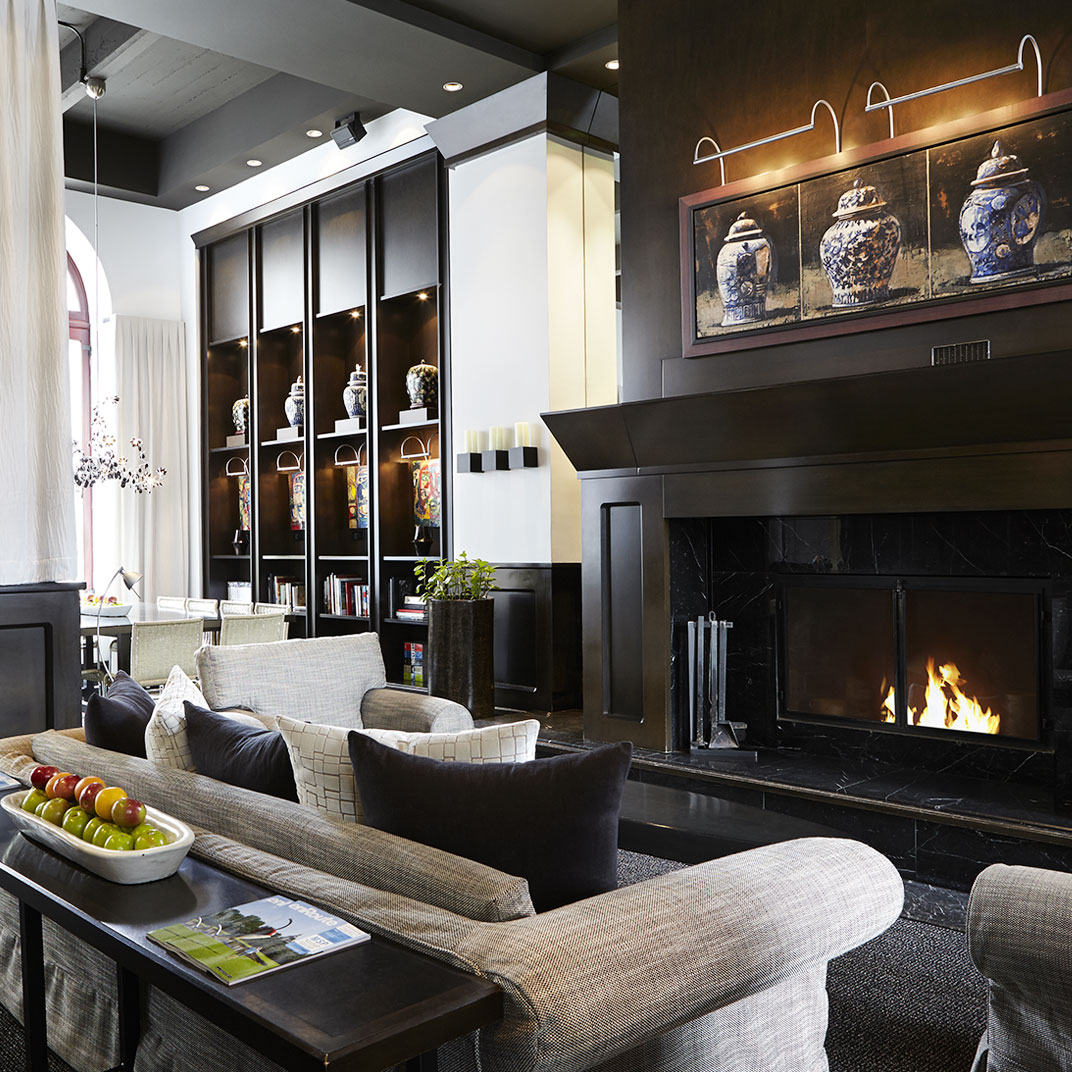
Hôtel Le Germain Québec
Quebec City, Canada
Classic architecture meets modern interior design in this Old Port boutique, perennial contender for the title of Québec City’s finest small hotel. Once the 1912 Dominion Fish & Fruit building, today it’s the Hotel le Germain, a warm and inviting home base for exploring the historic walled city of Old Québec.
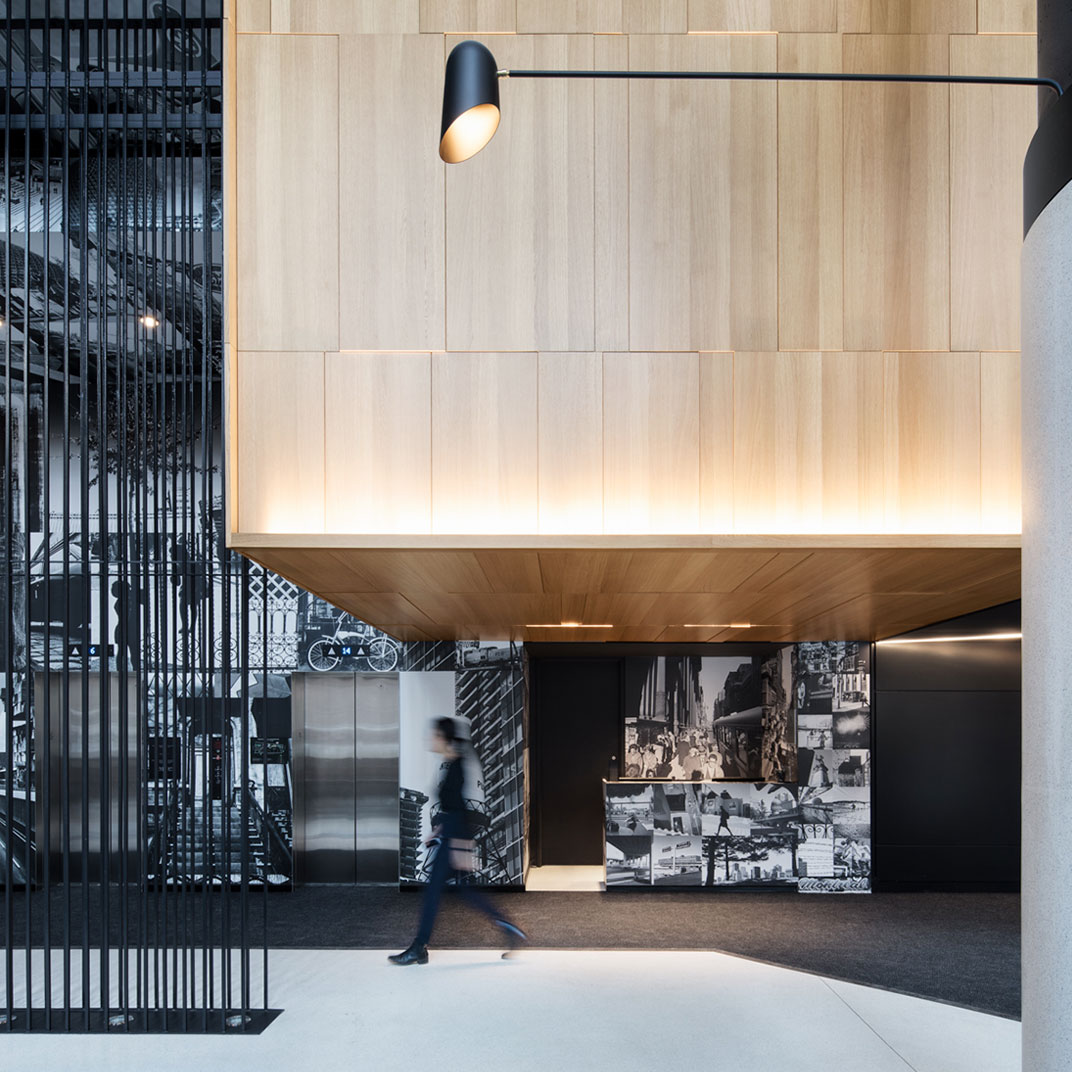
Hotel Monville
Montreal, Canada
Montreal is perhaps best known for its picturesque historic district, its cobblestone streets lined with heritage buildings, including the 18th-century structure that conceals the thoroughly contemporary Hotel Gault. For a follow-up, the Gault’s owners have decided to play even more against Montreal’s type with the towering, ultra-modern Hotel Monville, a hotel that’s drawn nearly as much attention for its forward-looking architecture as for its futuristic amenities — specifically, its robot room service.
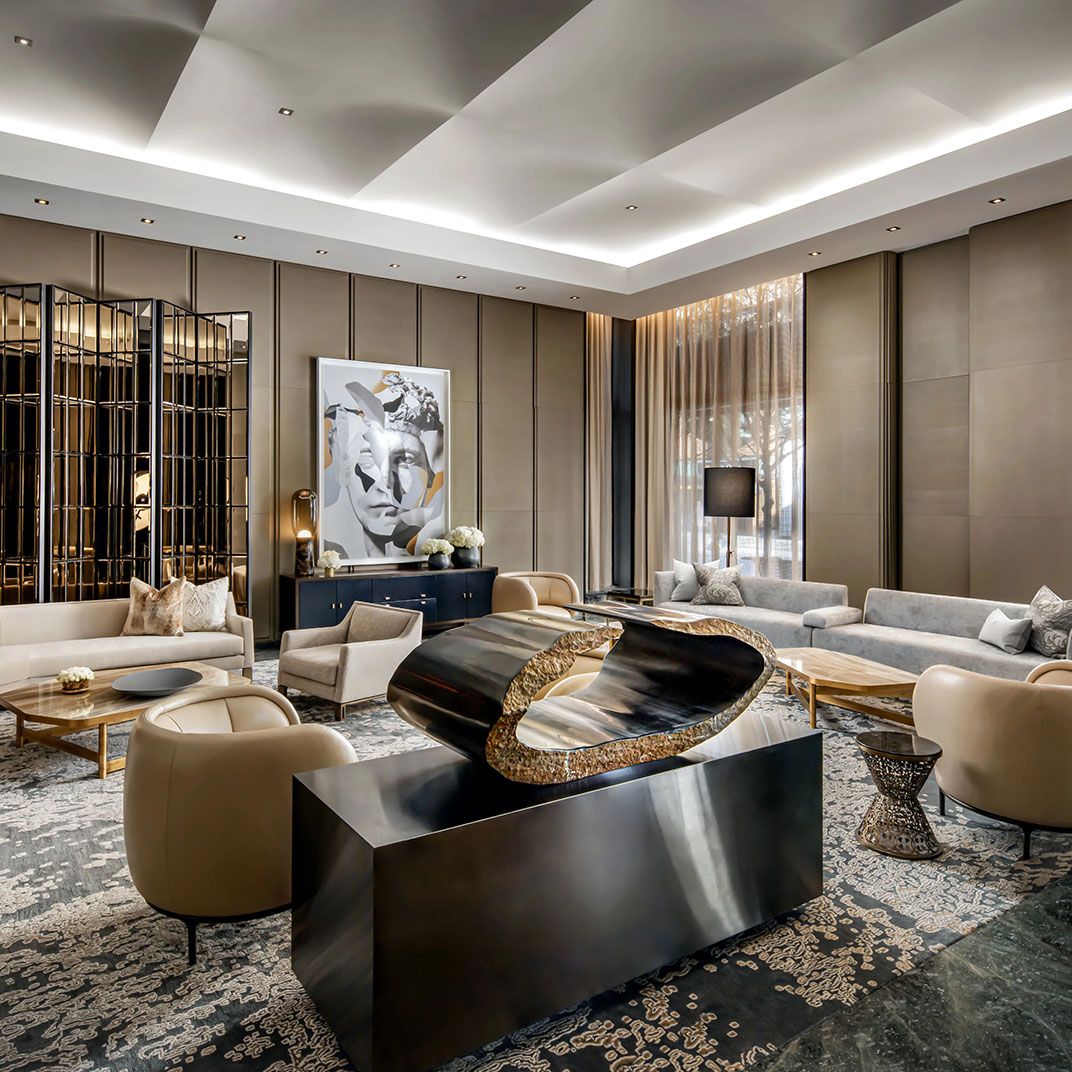
The Hazelton Hotel Toronto
Toronto, Canada
Possibly the most luxe of Toronto’s new crop of luxury boutiques, the Hazelton is a sign of the times: both high-design, with interiors by the ubiquitous Canadian firm Yabu Pushelberg, and unashamedly high-end, with suites averaging six hundred square feet and outfitted with all the latest luxury trimmings, from iPod docking stations to heated bathroom floors and flush mirror-mounted television screens. It’s meant to be a modern grand hotel, a contemporary version of what places like the Savoy in London or the Waldorf-Astoria in New York must have once been. And with a little luck that’s exactly what it’ll be.
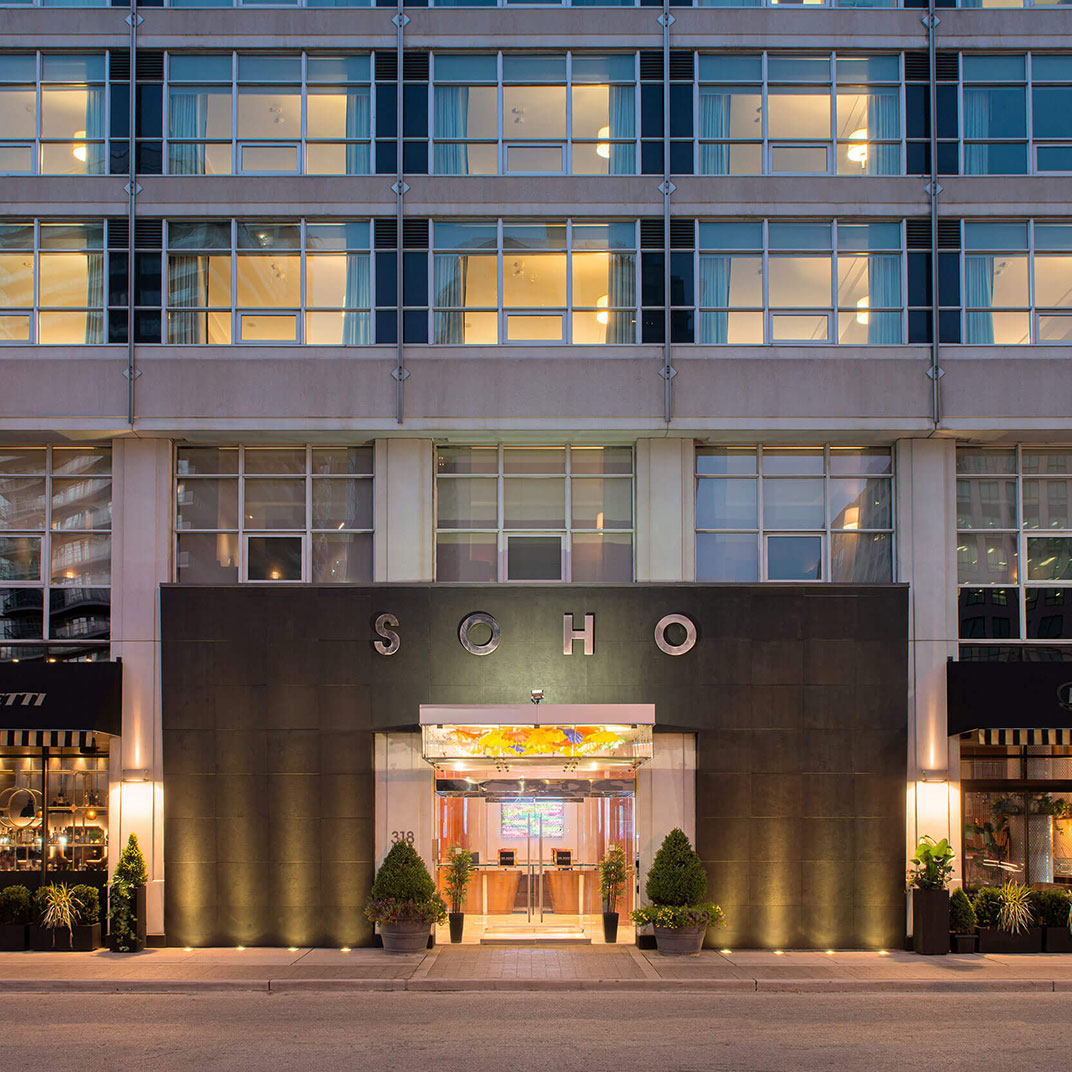
The SoHo Hotel & Residences
Toronto, Canada
Toronto’s SoHo Hotel & Residences is an example of what’s probably the most significant secondary effect of the boutique-hotel revolution: now, thanks to eccentric small operators, the luxury market is moving in a more design-forward direction. This is the sort of hotel that, a decade or two ago, might have been content to sacrifice style for comfort — but the SoHo, as it exists today, makes no such concessions.
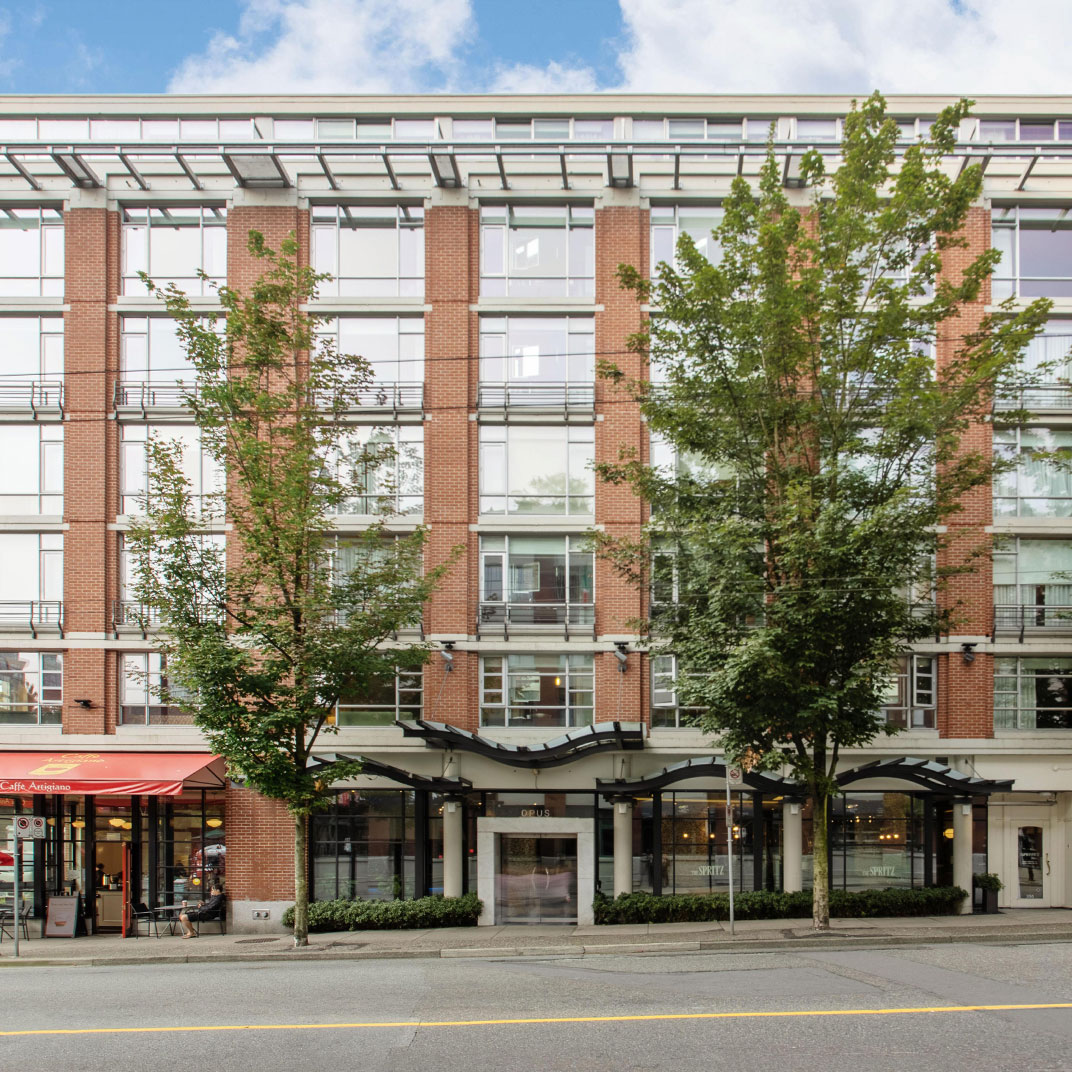
Opus Hotel
Vancouver, Canada
In a perfect world Vancouver might have a half-dozen hotels like this — but in the real world we’ve got to make do with just one. Opus Hotel Vancouver is, first of all, quite possibly the best-located hotel in town — its Yaletown neighborhood is full of life, packed with hip restaurants, cafés, galleries, and shops, and has a visual character that’s far more appealing than Vancouver’s central business district. And this character includes the Opus itself, a stylish contemporary structure whose brick-fronted facade lends it an extra measure of inviting warmth, a hint at what’s inside.
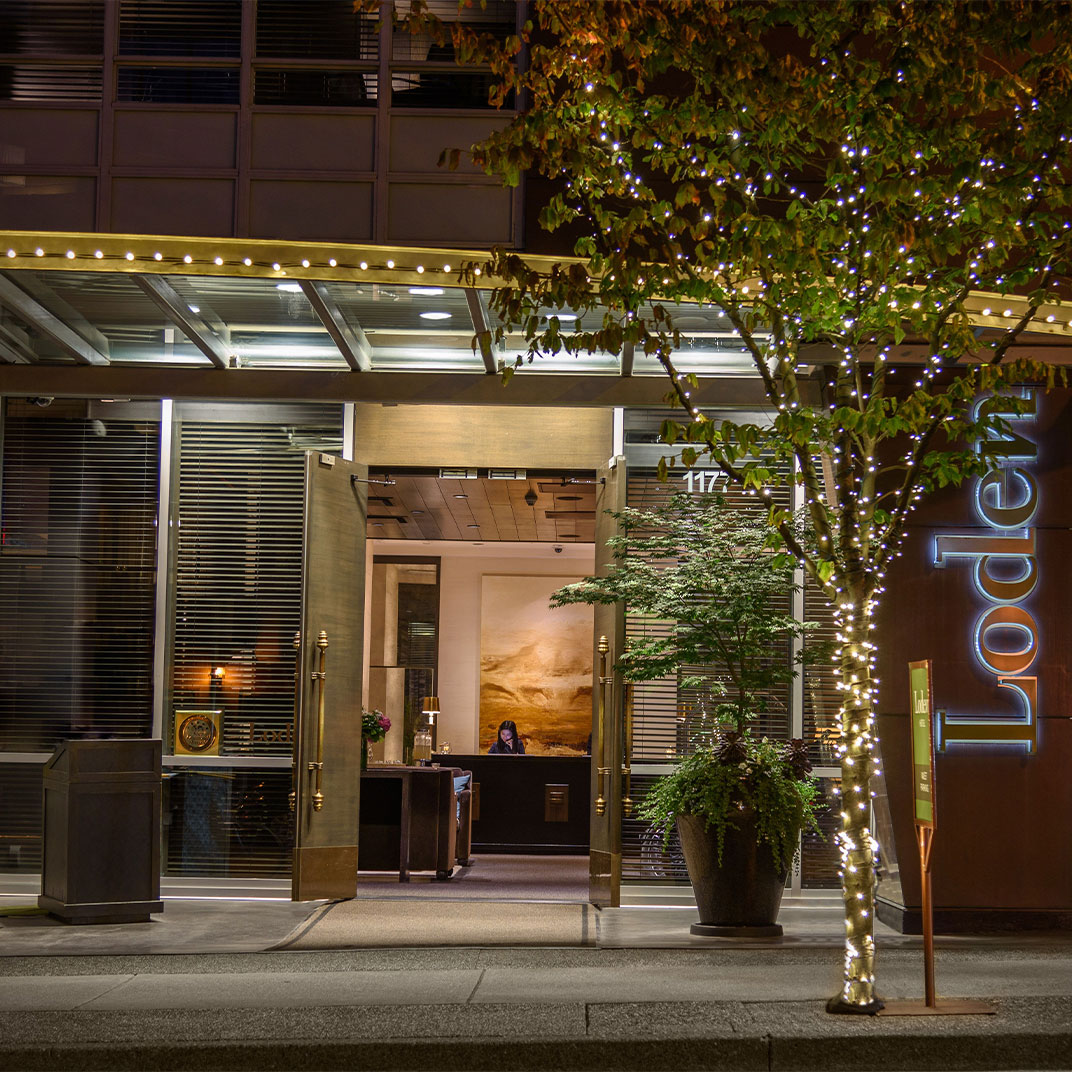
Loden Hotel
Vancouver, Canada
Many hotels in Vancouver can boast breathtaking views — this town is nothing if not topographically gifted. However, the district of Coal Harbour on the north edge of downtown has a slight edge on the rest. Think of it as stadium seating for the panorama that unfolds across the Burrard Inlet. Coal Harbour itself is a tony spot well worth an evening stroll; recently redeveloped with parks and a marina, the neighborhood boasts a sophisticated collection of towers with a level of design not commonly found in North American cities, and in one of these sleek glass towers you’ll find the Loden Hotel.


